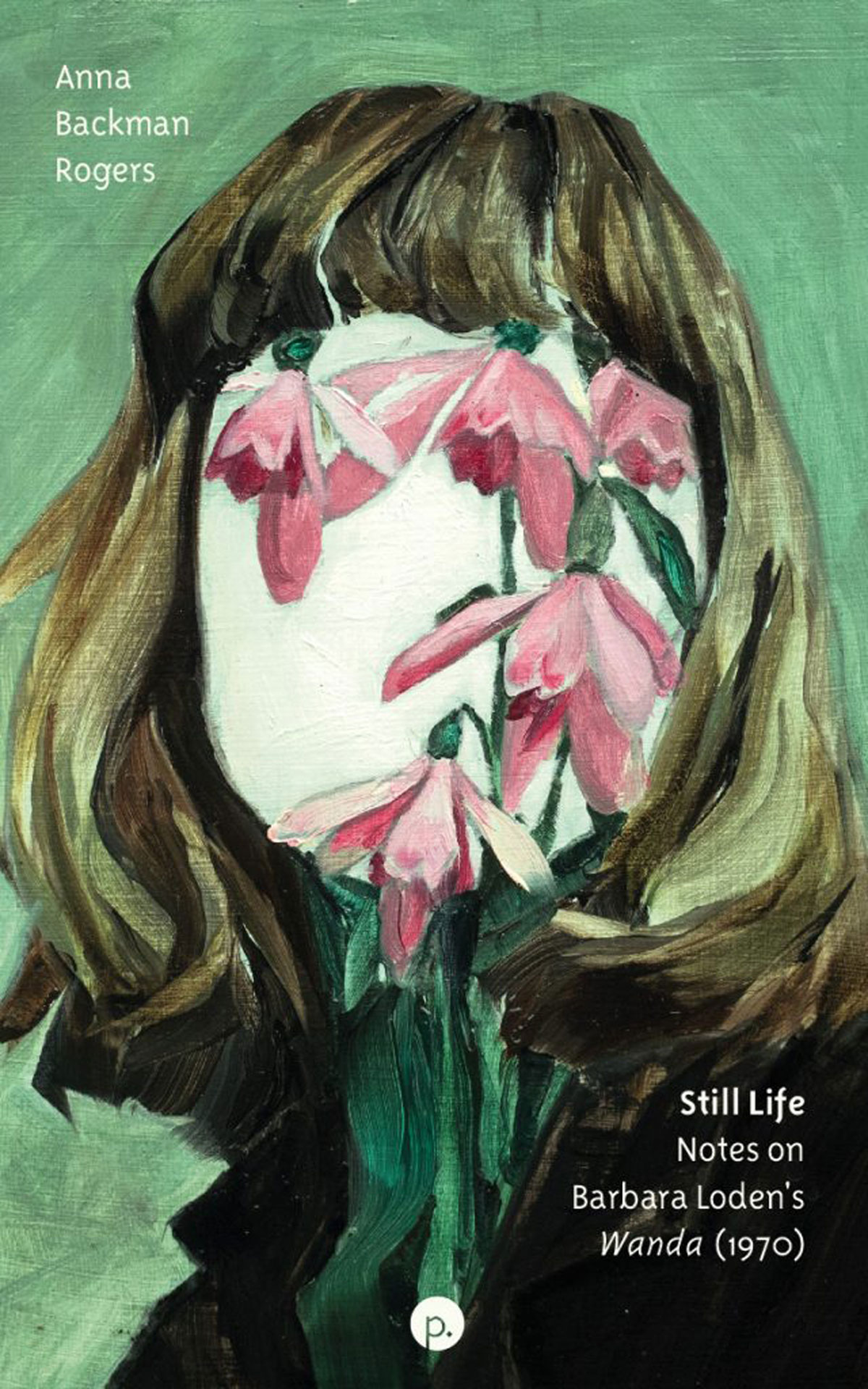As Anna Backman Rogers notes in the introduction to her volume dedicated to Barbara Loden’s 1970 film Wanda, contemporary accounts of the film’s reception range from assertions that the film has been marginalized in historical accounts of ‘New Hollywood’, to claims that it has been met with consistent critical acclaim since it was released. In fact, as Backman Rogers sets out, the truth lies somewhere in between. Despite being conceived by Loden as a direct riposte to the sorts of genre films which have since come to define the post-classical era in Hollywood (she called her story of a working-class woman who becomes, through grim necessity, the partner in a failed heist her ‘anti Bonnie and Clyde’), the film is largely absent from critical histories of independent American filmmaking in the 1970s. Nevertheless, it has become a favoured object of feminist film scholarship, with critical champions, including curator Bérénice Reynaud and actor Isabelle Huppert, helping to secure its place in the annals of feminist filmmaking.
Although a Criterion re-release in 2018 has enhanced its already ‘cult’ feminist status, bringing the film to a contemporary feminist audience, it remains at the periphery of US film history syllabi, as well as mainstream accounts of New Hollywood filmmaking. In part, this is due to a production history and subject-matter that bucks major trends associated with independent filmmaking of the time. The film depicts the aimless movement of the titular character: an unemployed, impoverished woman who has left her husband and children but lacks the means and energy to alter her life, relying on a man who abuses and demeans her for food and shelter and, ultimately, becoming embroiled in his criminal activity. As such, it neither aligns with the counter-cultural thrust of New Hollywood road movies like Bonnie and Clyde (1967) and Easy Rider (1969) (and their implicit glamourisation of an ideal of freedom inherently tied to capitalist values like individuality), or the forms of empowered, middle-class experience seen in other woman-directed films of the time, such as Claudia Weill’s Girlfriends (1978).
This chequered history informs the conception of Wanda as a ‘major minor’ (26) film that Backman Rogers sets out in the first half of this book, a critical reading of Wanda that defines the film as so ‘radical’ in its ‘anti-capitalist politics of refusal’ that film scholars are ‘still keeping trying to keep up with it’ (30). Whilst the film has garnered renewed attention in recent years (with notable publications by Elena Gorfinkle, Adrian Martin, Amelie Hastie, Maya Moneanez Smuckler and, most recently, Fjoralba Miraka in MAI, Backman Rogers’ own feminist journal) the key claim that sets Backman Rogers’ work apart (and justifies her book-length study of the film) are its insightful reflections on the resonance of its aesthetic register in the contemporary political moment. Here, Backman Rogers builds upon her previous work on Sofia Coppola (a filmmaker whose ‘girly’ aesthetic has been dismissed as frivolous, post-feminist and capitalist-aligned), which has established the resistant function of Coppola’s ostensibly post-feminist sensibility through close attention to the ambivalent aesthetic register of her films. It is bracing to see Backman Rogers turn her attentiveness to formal politics towards a film dealing with a form of feminine experience that is largely absent from Coppola’s oeuvre. Her insight here establishes that the challenges of the film, specifically its emphasis on an aesthetics of denial, of the margin, of slowness and crisis, speaks to an engagement with the realities of working-class women’s experiences, which deny them the forms of subjectivity and choice celebrated in ostensibly ‘feminist’ films, both past and present. For Backman Rogers, the ‘ethical core’ of the film is this invitation to attend to the way ‘the world actually is’ (42) for women like Wanda, for whom luxuries like choice, freedom and empowerment are delimited by the facts of economic circumstance. In light of the political thrust of this approach to Wanda it is pleasing to see the book available open access via non-profit publisher Punctum Books.
Loden’s refusal to offer any form of salvation for Wanda, or depict her doing anything other than mutely acquiescing to the indignities she suffers, is, Backman Rogers suggests, an antidote to cinematic images which suggest that a route out of gendered poverty exists for the feminine underclass of American society. This, she argues, makes the film highly relevant to ‘the political endgame being played out on a global scale’ (48) in the present moment. Rather than offering another image of women overcoming material circumstances (and thereby implicitly endorsing an ideal of meritocracy that conceals structural inequality), Loden imbues her film with an aesthetic of failure and refusal that rejects the feelings of freedom and possibility that sustain the myth of meritocracy. For Backman Rogers, this emphasis on slowness and impasse ‘skewers entirely the idea that freedom of movement is possible for all people and the coterminous concept that America is a society that facilitates social mobility. That lack of resolution, of redemption, and of hope is the point of the film’ (62). It is for this reason that feminist scholars must repeatedly turn back to this rare ‘counterimage’ (29) to visions of hope and possibility presented by mainstream film and feminism.
This emphasis on the political prescience of Loden’s images is brought to fruition in the second half of Still Life, which dedicates 78 of the book’s 143 pages to a close, formal reading of the film. This takes the form of a careful scene-by-scene description, followed by a reflection on the contribution of each scene to the politics of the film a whole. This section establishes the astonishing clarity of Loden’s vision, achieving Backman Rogers’ stated aim to wrest her legacy from association with the improvisational cinéma vérité movement and related accusations that the character of Wanda (who is played by Loden herself) is autobiographical and did not require her to act (a myth that Backman Rogers reveals was perpetuated by Loden’s own husband, Elia Kazan, following her untimely death from breast cancer at the age of 48). This section of the book offers insights into the precision with which Loden assembled the film, insights that might have been supported with illustrative screenshots but, given how precisely the look and feel of the film is described, are ultimately not required. Particularly striking are Backman Rogers’ descriptions of moments which confront viewers directly with the ‘crushing and bleak realities’ (139) of Wanda’s existence, in particular her mute acceptance of the violence she suffers at the hands of her companion Mr Dennis, lending weight to the assertion made at the start of the book that Wanda’s passivity ‘is perhaps not only a survival mechanism, but a cultivated act of resistance which, nonetheless, cannot lead anywhere’ (24).
The care and attentiveness which Backman Rogers affords Loden’s film constructs a rare, in-depth examination of the formal politics of a woman-authored film, granting this book a place alongside other similar works of close analysis, including Raymond Durgnat’s examination of Psycho (1960), a text that Backman Rogers cites as a key influence. The book ends with a conclusion that explicitly connects the close reading presented in its second half to the limits and failures of contemporary feminism, suggesting that its ‘refusal to turn away or soothe’ is ‘precisely what we are missing […] not only in our cinema screens, but in our politics’ (142). Backman Rogers’ claim that Wanda is ‘the film of our contemporary moment’ (30) is certainly justified by this exemplary work of close analysis.
Competing Interests
The authors have no competing interests to declare.

